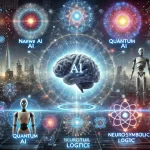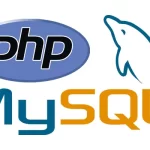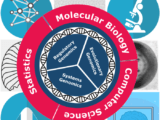
Mastering Bioinformatics in 2025: Essential Skills and Emerging Trends
July 30, 2025Introduction
In today’s rapidly evolving scientific landscape, biological research has transcended the traditional laboratory bench. The explosion of biological data, particularly from genomics initiatives, has shifted much of modern biological inquiry to the computer. Scientists now delve into vast digital repositories to formulate hypotheses, complementing wet-lab experiments. This paradigm shift underscores the critical role of computational tools in collecting, storing, analyzing, and visualizing immense datasets. Bioinformatics, once a niche field, has become a core competency for biological researchers. This guide explores the core concepts, practical skills, and recent advancements in bioinformatics as of 2025, equipping you to navigate this dynamic digital frontier.
The Importance of Bioinformatics
Bioinformatics applies information technology to manage and interpret biological data, serving as a vital subset of computational biology. Its goal is to develop predictive methods to model an organism’s functions and traits based on its genome sequence. This ambition rests on the Central Dogma of Molecular Biology: genetic information flows from DNA to RNA to proteins, which drive life’s functions. Understanding this flow and the role of mutations in evolution is key to interpreting vast sequence data.
Bioinformatics simplifies complex biological entities, such as DNA and proteins, into manageable 1D sequences for computational analysis. It also models biochemical pathways using mathematical equations, simulating cellular conditions to generate testable hypotheses. This interdisciplinary approach is essential for modern biology, bridging biological problems with computational solutions.
Recent Advances in Bioinformatics (2025)
As of 2025, bioinformatics is undergoing transformative changes driven by technological innovations and the growing availability of biological data. Below are the key trends shaping the field:
Artificial Intelligence and Machine Learning
AI and machine learning (ML) are revolutionizing bioinformatics by enabling rapid and accurate analysis of complex datasets. Tools like AlphaFold have made significant strides in predicting protein structures, a longstanding challenge in biology. AI is also used to identify drug targets, predict disease outcomes, and personalize treatments, particularly in oncology. For example, machine learning algorithms enhance genome-wide association studies, linking genetic variants to diseases with unprecedented precision Source: Frontiers in Genetics.
Cloud Computing
Cloud computing has transformed bioinformatics by providing scalable, cost-effective solutions for data storage and analysis. Platforms like AWS and Google Cloud enable researchers to process large datasets without expensive on-premises infrastructure, democratizing access to advanced tools. This is particularly crucial for handling the data volumes generated by next-generation sequencing (NGS) Source: BDG Life Sciences.
Genomics and Proteomics
Advances in NGS have led to an explosion in genomic and proteomic data. Bioinformatics tools are essential for assembling genomes, annotating functional regions, and understanding gene regulation. Tools like MaSuRCA and Enformer are streamlining genome assembly and annotation, respectively Source: CBIRT.
Personalized Medicine
Bioinformatics is pivotal in personalized medicine, integrating genomic, transcriptomic, and proteomic data to tailor treatments to individual patients. This is especially impactful in cancer research, where genomic profiling guides therapy selection and predicts patient responses Source: PMC.
Data Integration and Management
The increasing complexity of biological data necessitates sophisticated data integration and management systems. Bioinformatics researchers are developing tools to handle heterogeneous data sources, ensuring seamless data sharing and analysis. Relational databases and SQL are critical for managing these repositories Source: Nature.
Educational and Career Opportunities
The demand for skilled bioinformaticians is rising, with expertise in AI, ML, and cloud computing becoming essential. Institutions worldwide are offering specialized training programs, and conferences like ISMB/ECCB 2025 highlight the field’s growth Source: ISCB. Proficiency in programming languages like Python and R is increasingly valued in the job market.
Building Your Digital Foundation
To harness bioinformatics, you need a robust digital workbench. Key skills include:
Unix/Linux Mastery: Unix/Linux is the backbone of scientific software development. Mastering the command line enables efficient handling of large datasets, automating tasks like searching thousands of database queries Source: Bioinformatics.org.
Effective Web Searching: Beyond basic searches, mastering boolean logic and understanding search engine algorithms helps locate precise scientific information.
Accessing Scientific Literature: Platforms like PubMed provide access to peer-reviewed literature, essential for staying updated Source: PubMed.
Utilizing Public Databases: Repositories like the Protein Data Bank (PDB), GenBank, and UniProt are central to bioinformatics, offering data on molecular structures, DNA/RNA sequences, and proteins Source: PDB, GenBank, UniProt.
The Bioinformatician’s Toolkit
With foundational skills in place, you can leverage specialized tools:
Sequence Analysis
Sequence analysis is fundamental to bioinformatics. Tools like BLAST and FASTA enable pairwise sequence comparisons, while ClustalW supports multiple sequence alignments, revealing evolutionary connections. Gene prediction identifies coding regions in DNA, and phylogenetic analysis builds evolutionary trees Source: NCBI.
Protein Structure Analysis
Proteins’ 3D structures dictate their functions. Tools like RasMol and Cn3D visualize these structures, while homology modeling predicts structures based on known templates. AI-driven tools like AlphaFold are advancing this field Source: DeepMind.
Large-Scale Data Challenges
The “omics” era generates vast data volumes. Tools like Phred and Phrap support genome sequencing and assembly, while DNA microarrays and proteomics require sophisticated bioinformatics for data interpretation Source: BMC Bioinformatics.
Advanced Skills for Deeper Insights
To scale research and build custom solutions, advanced skills are crucial:
Programming with Python and R: While Perl was historically significant, Python and R are now preferred for their versatility in handling large datasets and implementing ML algorithms. Regular expressions and scripting automate tedious tasks Source: Nature.
Database Management: Understanding flat file and relational databases (RDBMS) is essential. SQL enables flexible querying of biological data Source: Bioinformatics Advances.
Visualization and Data Mining: Tools for 2D and 3D visualization, combined with ML techniques like neural networks, uncover hidden patterns in datasets, driving new discoveries Source: HIMSS.
Career Outlook
The bioinformatics job market is booming, with a projected growth in the AI bioinformatics market to over $136 million in the next decade Source: HIMSS. Roles like bioinformatics analysts and computational biologists require skills in AI, cloud computing, and data management. Conferences like the Nextflow Summit and ISMB/ECCB 2025 offer networking and learning opportunities Source: Seqera.
Conclusion
Bioinformatics is the computational engine of modern biology, integrating biology with advanced computational tools. By mastering Unix/Linux, programming, database management, and emerging technologies like AI and cloud computing, you can tackle pressing biological questions. The field’s interdisciplinary nature demands “tool-builders” who bridge biology and computation, transforming raw data into profound insights. Your journey into this dynamic field starts now, equipped with the skills to shape the future of biological research.
Table: Key Bioinformatics Tools and Their Applications
Tool | Application | Description |
|---|---|---|
BLAST | Sequence Analysis | Compares nucleotide or protein sequences to identify similarities Source: NCBI. |
ClustalW | Multiple Sequence Alignment | Aligns multiple sequences to reveal conserved patterns Source: EBI. |
AlphaFold | Uses AI to predict 3D protein structures Source: DeepMind. | |
Phred/Phrap | Genome Sequencing and Assembly | Processes and assembles DNA sequences Source: BMC Bioinformatics. |
SQL | Database Management | Queries relational databases for biological data Source: Bioinformatics Advances. |
Python/R | Supports scripting and ML for bioinformatics tasks Source: Nature. |


















